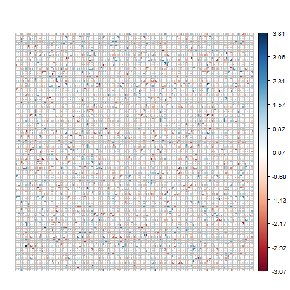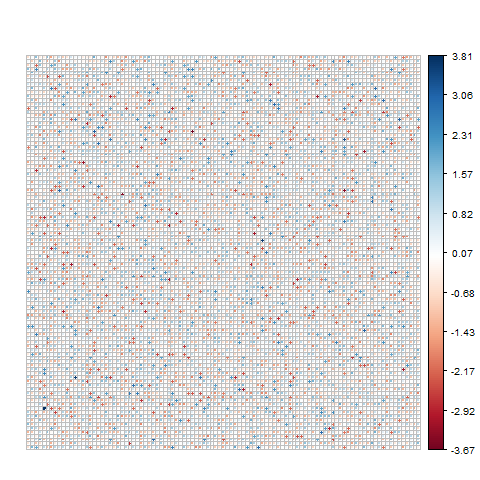 And just like autumn comes now and again, so does the time when my country, Spain, tears itself apart for one lack of reason or another. You might read all sort of news about it but they will mostly be processed products of a well oiled propaganda machine serving their masters at both sides of the aisle; true it is that the first casualty of war is truth.
And just like autumn comes now and again, so does the time when my country, Spain, tears itself apart for one lack of reason or another. You might read all sort of news about it but they will mostly be processed products of a well oiled propaganda machine serving their masters at both sides of the aisle; true it is that the first casualty of war is truth.
In a conflict situation words like truth, freedom, justice, democracy and, in general, any word with a heavy positive charge loses its meaning since they are appropriated by every side in the conflict. Still, regardless where the truth lies —pun intended— I am more interested in this post about the dynamics of conflicts, why they happen and if they can be prevented or even solved.
For this goal I will not use historical arguments but instead I will lay out a few common sense dynamics for a social simulation to finally discuss its results… Also, at the end I will surrender my opinion for anybody to refute at will.
War
So once upon a time there was a new land —squared in shape— that was colonized by a group of people with two distinct and marked ideologies: Red and Blue. There was about the same number of Reds and Blues colones and they distributed randomly, and peacefully, in the new land.
Next we can see a picture of this new land with its citizens represented by red and blue dots which size, and color intensity, indicates how far they are in their Blue and Red ideologies. The initial intensities of their ideologies can be thought as the values of a Standard Normal Distribution.

Now let’s see how this new society evolves with the “topper rule” and the “two worlds rule”:
- The Topper Rule: Under this rule you will be shunned, reprimanded or belittled for not being Blue enough or Red enough. This is the case now in Catalonia where people that do not want to clearly position themselves are scornfully coined as “equidistantes”.
- The Two Worlds Rule: Some people have loved ones and friends that happen to have very different opinions, their hearts are split amongst them and they cannot easily position themselves one way or the other.
These two rules will be implemented in the simulation in the following way:
- Topper Rule: If the person receiving the action (the passive) has the same ideology of the one initiating the action (the active) then it will keep his ideology level unchanged as long as it is higher than the active, otherwise he/she will adopt the active’s level of ideology.
- Two Worlds Rule: If the passive has a different ideology than the active, then the passive will adjust his/her ideology to the average of his/her own ideology and the level of the active.
Let’s see now the evolution:

First thing to notice is how fast people cluster into Red and Blue communities. The second thing to notice is that, once a cluster is formed, the most radical members of that cluster will drag everybody else into their ways little by little.
Finally, the smaller clusters either join to form bigger ones or disappear allowing the boundaries between the groups with Red ideology and Blue ideology to become fairly stable —many iterations are required to change them in a significant way. Below we can see the end result after 150,000 events.

If we define the “moderates” as those whose position, either in the Red or Blue spectrum, is within a standard deviation of the population, we would find that at the beginning of the simulation we had around 67% of moderates and after reaching the “equilibrium” now we only have around 5%.
This small 5% are the ones keeping society from falling into a spiral of violence, they are the ones building bridges between the two communities, the ones that will be scorned with the “equidistante” word. If we remove the “two worlds rule” only dark shades of Red and Blue will be able to interact and they will be too far away in their beliefs to reach agreements… this means war, and this 5% is the one becoming increasingly smaller in Catalonia.
Peace
I believe that the above dynamics fairly describe many modern societies. We buy into the “with me or against me” mindset very easily, and we reason our views with one another as we would a sport match.
If unchecked, societies polarize so much that they simply break. We truly don’t learn from history and tend to forget how fragile peace is. I once asked a refugee from the extinct Yugoslavia about the prewar atmosphere in her country before disaster struck, here is her terrifying answer:
“There was no prewar atmosphere, I didn’t see it coming.”
The Solution
There is none… Well, unless we want to call “solution” to the reconciliation process lay out by the winners of a Civil War.
Once we reach that 5% of moderates in a population, Red and Blue sides will steadily radicalize until disaster. We might think education is a solution but the educative process is controlled by majorities in democracies, and when the majorities are already radicalized there is no hope in education doing anything good, quite the opposite.
My workaround —I resist to call it ‘solution’— for this otherwise unavoidable civil unrest scenario is… [drum roll] The Two State Solution. This workaround is in my opinion the best chance for Palestine, Catalonia, Scotland, Northern Ireland, Ukraine… etc.
When two communities reach a point where they cannot live together, rather than having a miserable existence they should divide land and resources and part ways.
Of course no side wants to split Catalonia in two because they both want the whole Catalonia to be one color, not to mention the discussion on how to split land and resources might be an ordeal, but at least both sides would share a common goal and, walking towards that goal, there should be plenty of opportunities to rethink if we truly cannot live together… And if that’s the case… Farewell and Godspeed.
Update 27-Dec-2017
Apparently I am not alone when thinking a ‘Two State Solution’ might be the way to go. Check the popularity of this change.org petition asking precisely that.

